In the article Notes and Intervals, we examined the C major scale, the notes included in it, their intervals, as well as 12 keys of music. Now is the time to get to know other scales.
The scale is a set of notes that has a clear sequence of intervals within one octave. When moving to the next octave, this sequence is saved.
The scale consists of a tonic – the note from which it is built and a series of intervals (in the main seven modes, these are half step and whole step intervals). Let’s look at these basic 7 modes.
Main Seven Modes
Ionian Mode
The same as a major scale. It has a fun, joyful sound. To begin with, consider it with tonic C. It includes all natural notes:
C D E F G A B
Consider the image:

Numbers are scale steps.
W – whole step interval;
H – half step interval.
The change (moving) of steps in musical theory when constructing other scales is considered relative to the major scale. In other scales, the steps and intervals will be different. Further we will consider how this happens.
And now we will build A major scale:
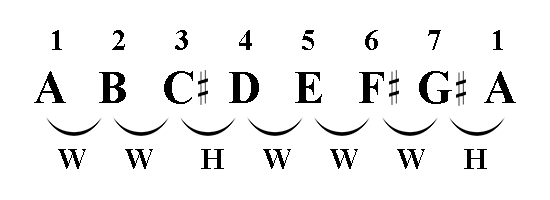
To build A major scale, we need to find note A and keeping the sequence of intervals relative to this note, play all 7 notes located at these intervals within one octave.
C major scale intervals: W W H W W W H.
If you know the sequence of major scale intervals, you can build a major scale from any note and see which notes will be included in it.
Next, we will build all other scales relative to tonic A.
So, A Ionian (A major scale):
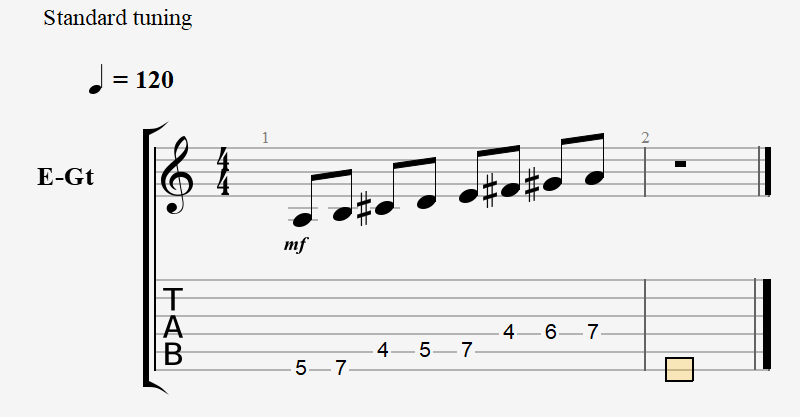
To understand another detail, we place the fingering of the guitar and on it we denote the major scale within two octaves. The filled circles are the major scale within one octave. The tonic is painted over in red.
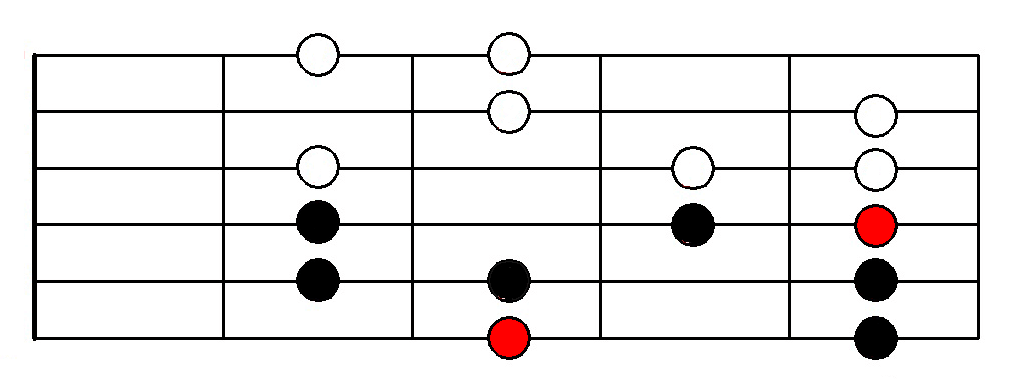
Dorian mode
The dorian minor mode sounds slightly brighter than the natural minor.
A Dorian scale:
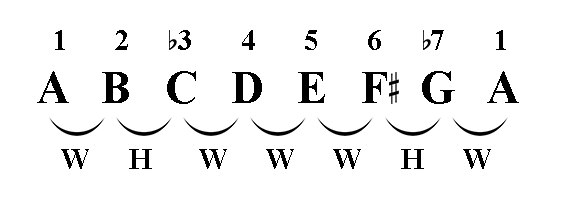
The picture shows which notes are included in the A dorian scale, the steps and intervals are also indicated (designated relative to the major scale). In this scale there are ♭3 and ♭7 steps, which means that the third and seventh notes of the major scale in the Dorian mode are shifted half a tone down.

Dorian mode fingering:
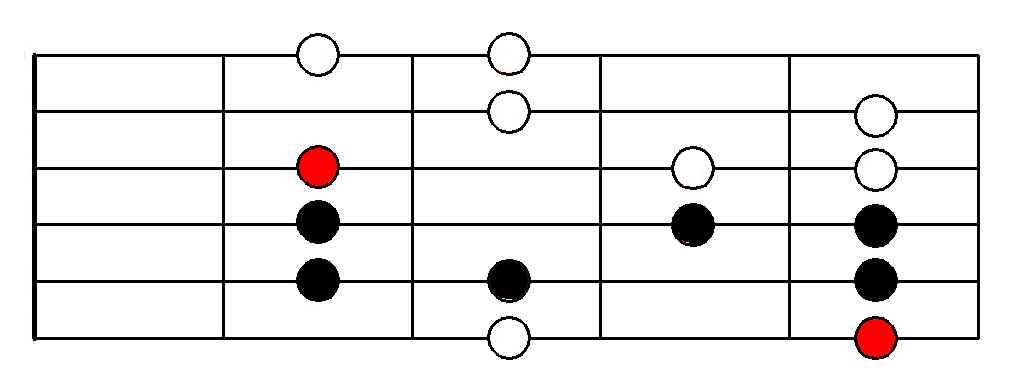
That is, if we take the major scale and play 7 notes, starting from the second step, then we will get the Dorian scale.
Phrygian mode
The Phrygian mode has a gloomy “Spanish” sound.
A Phrygian dominant scale:
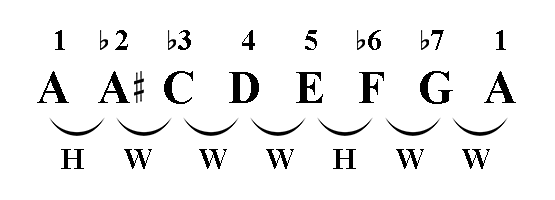
The phrygian scale has flat 2, 3, 6 and 7 steps relative to the major scale.
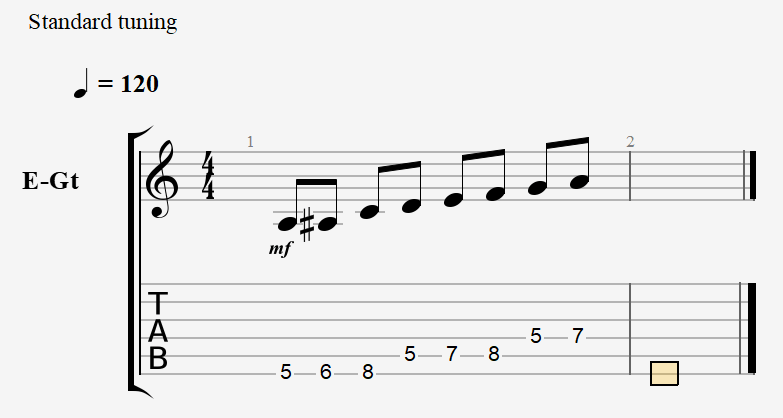
Fingering of the Phrygian mode (starts from the 3rd step of the major scale):
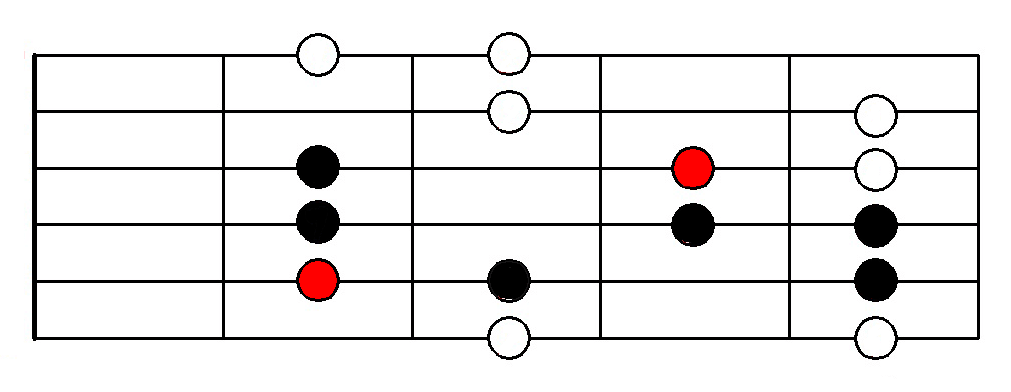
Lydian mode
The Lydian mode sounds detached and mysterious.
A lydian scale:
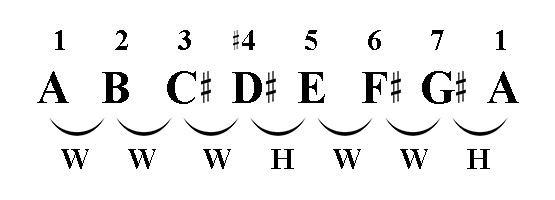
In Lydian mode the fourth step of the major scale is a sharp.
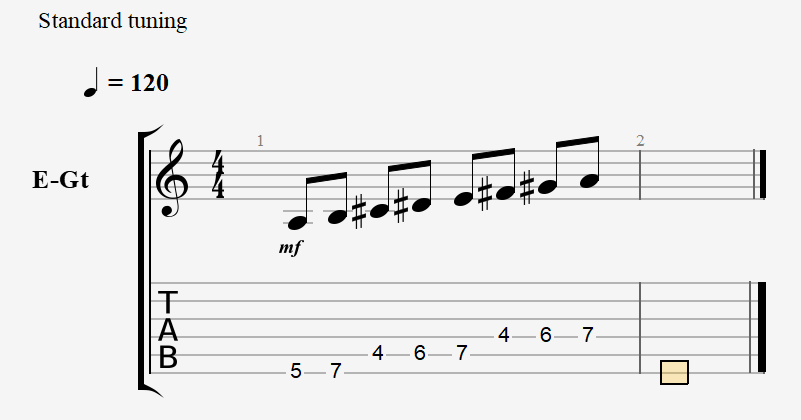
Fingering of the Lydian mode (starts from the 4th step of the major scale):
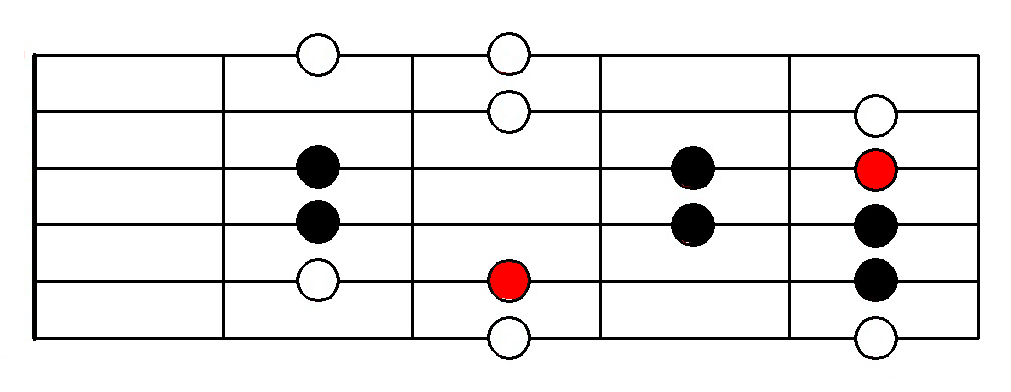
Moving along the major scale, starting from the fourth step, we get lydian mode.
Mixolydian mode
The mixolydian mode resembles the ordinary major, however it is not so triumphant and complete.
A mixolydian scale:
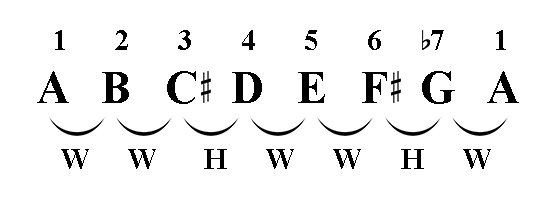
In the mixolydian mode, the 7th step of the major scale is a flat.
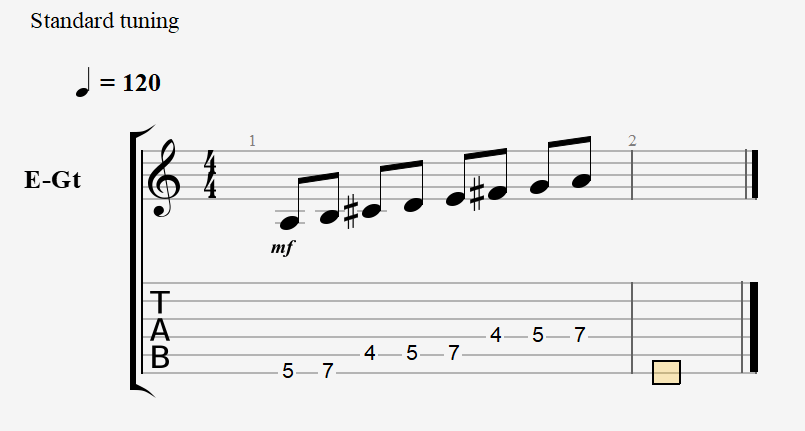
Fingering of the mixolidian mode (starts from the 5th step of the major scale):
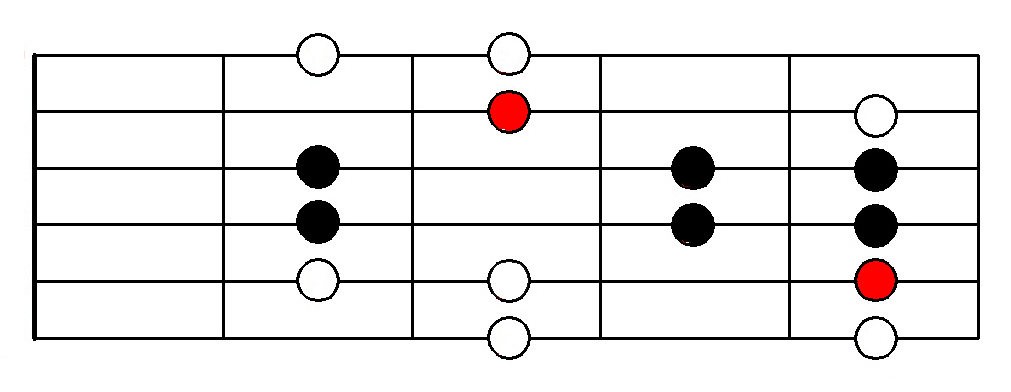
Aeolian mode
Aeolian mode (natural minor) has a sad medieval sound.
A aeolian scale:
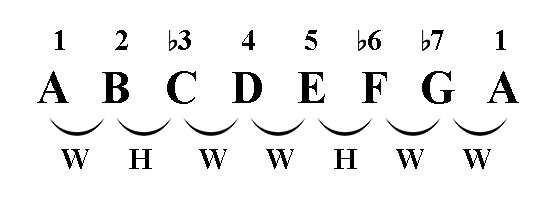
In the Aeolian mode the steps 3, 6 and 7 are flat.
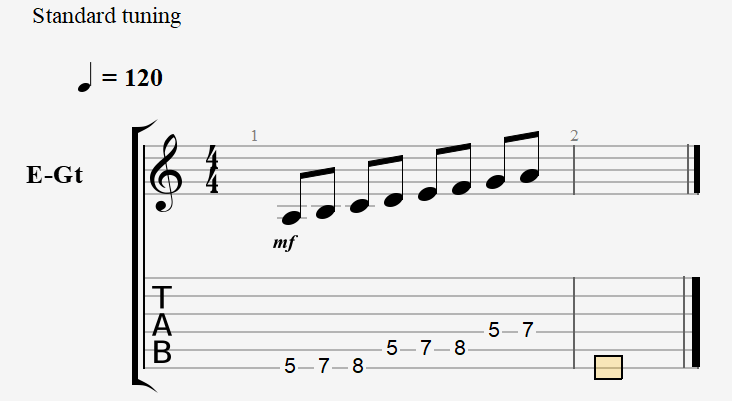
Fingering of the Aeolian mode (begins with the 6th step of the major scale):
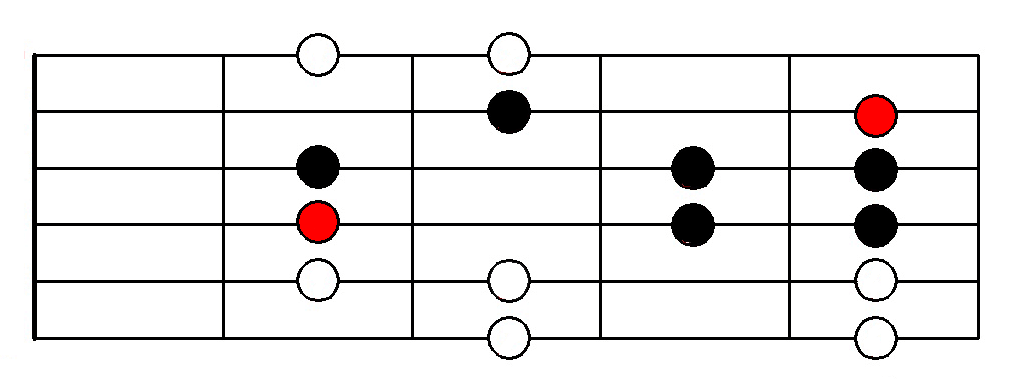
Locrian Mode
The Locrian mode combines the mystery of the Lydian major and the gloomy “Spanish” sound of the Phrygian minor.
A locrian scale:
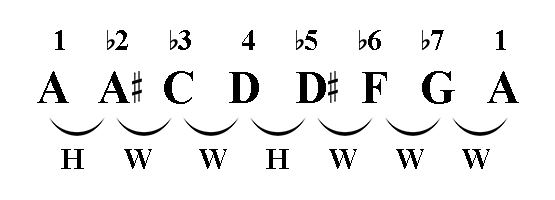
In Locrian mode 2, 3, 5, 6, 7 steps are lowered.
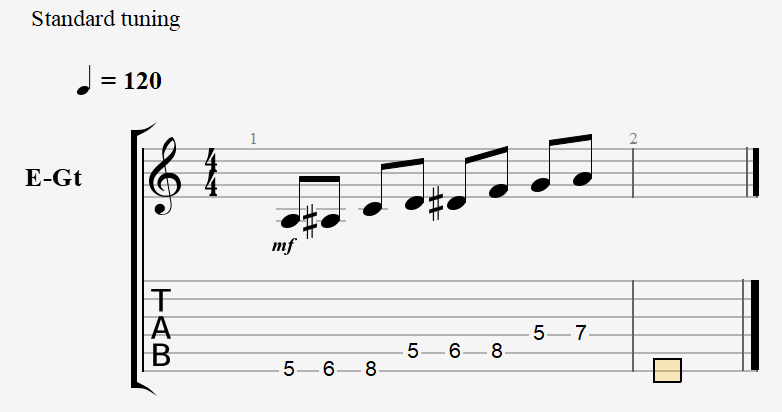
Fingering of the Locrian mode (starts from the 7th step of the major scale):
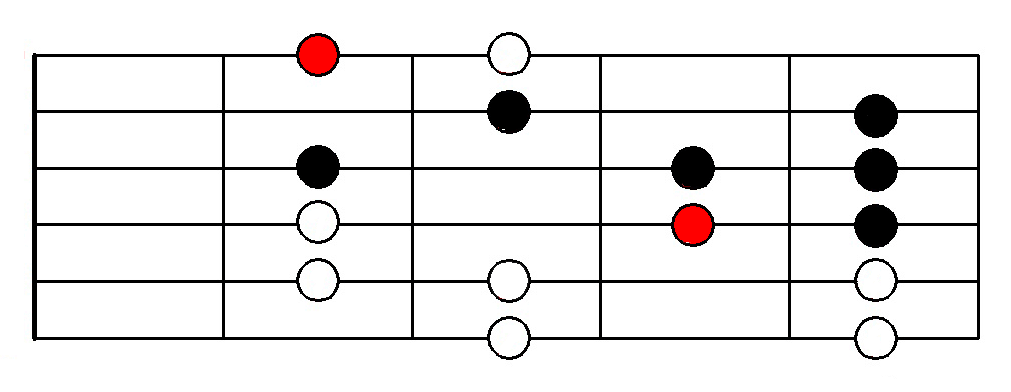
Other scales
In addition to the main seven modes, there are other scales. Let’s consider some of them.
Harmonic Minor Mode
The sound of this scale has an “Arabic” or “Egyptian” tone.
A harmonic minor scale:
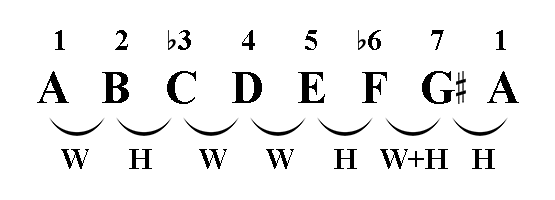
In the harmonic minor, the seventh step is increased by a half step, unlike the natural minor.
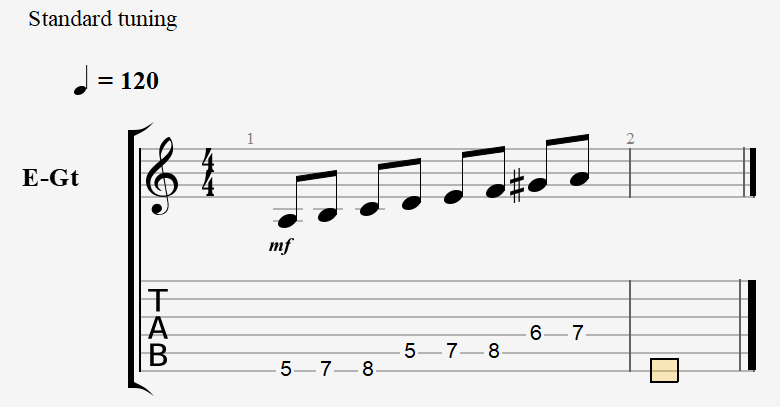
Harmonic minor fingering:
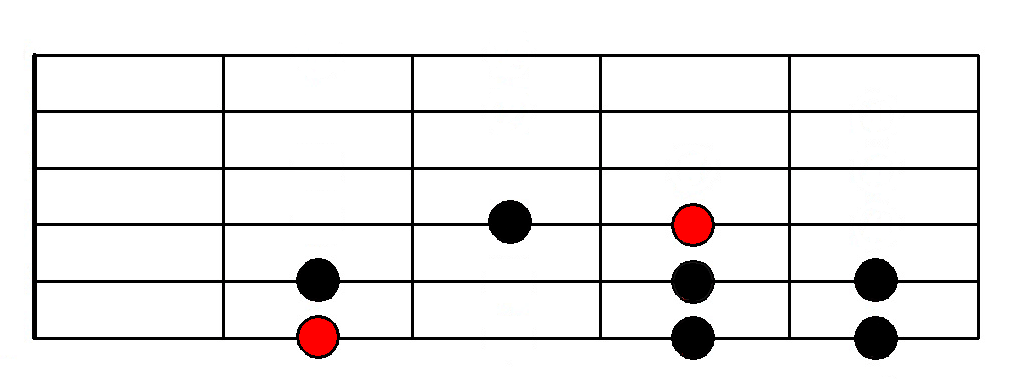
Flamenco mode
Flamenco scale has a classic Spanish tone.
A flamenco scale:
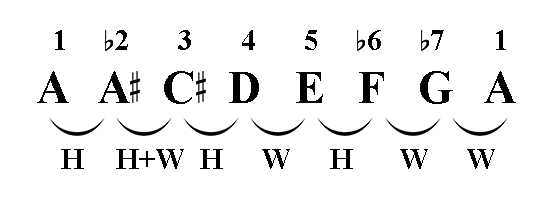
In flamenco mode steps 2, 6 and 7 are lovered.
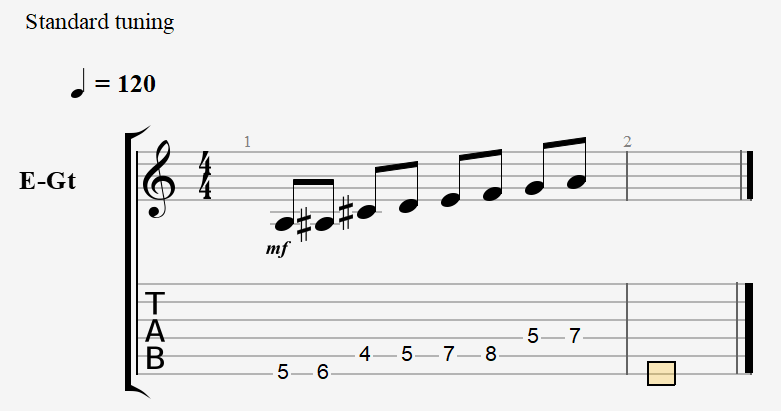
Flamenco mode fingering:
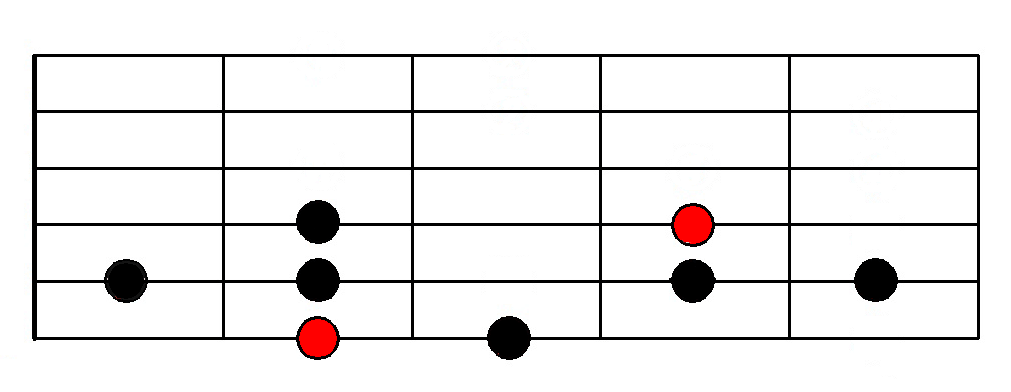
Pentatonics
Pentatonics is a scales, which have a 5 notes. The main 2 pentatonic scales are major and minor.
Major Pentatonic Mode
A major pentatonic scale:
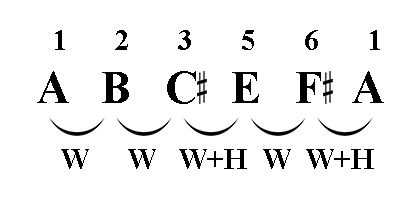
In major pentatonic scale steps 4 and 7 are absent.
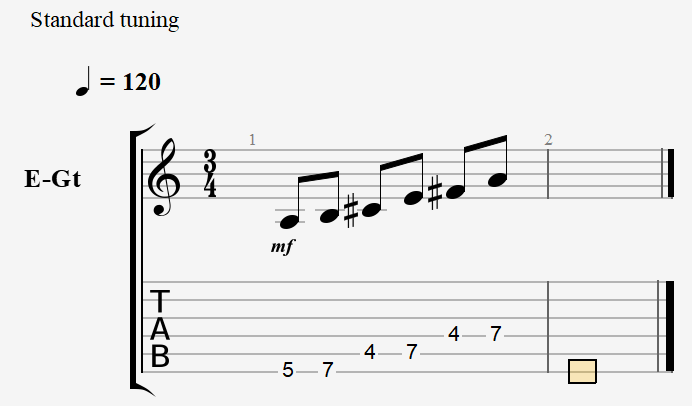
Major pentatonic mode fingering:
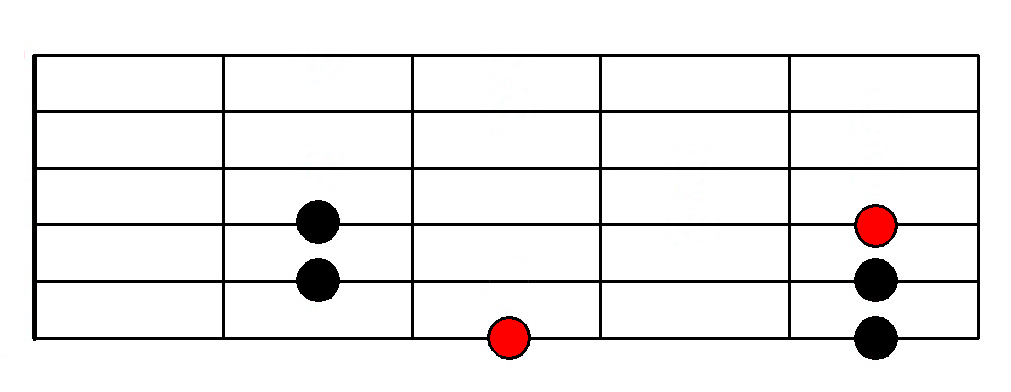
Minor Pentatonic Mode
This scale is most often used in rock, metal and blues and has the following structure.
A minor pentatonic scale:
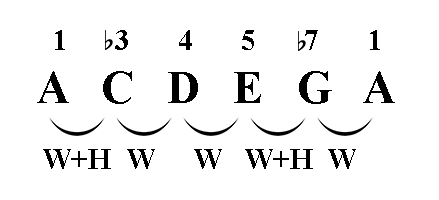
In this scale steps 2 and 6 are absent and steps 3 and 7 are flat.
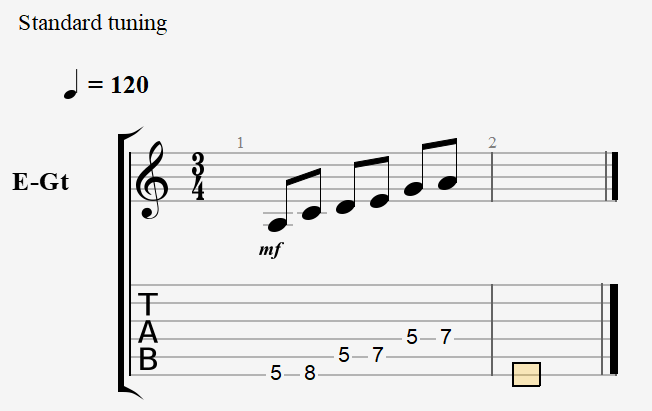
Minor pentatonic fingering:
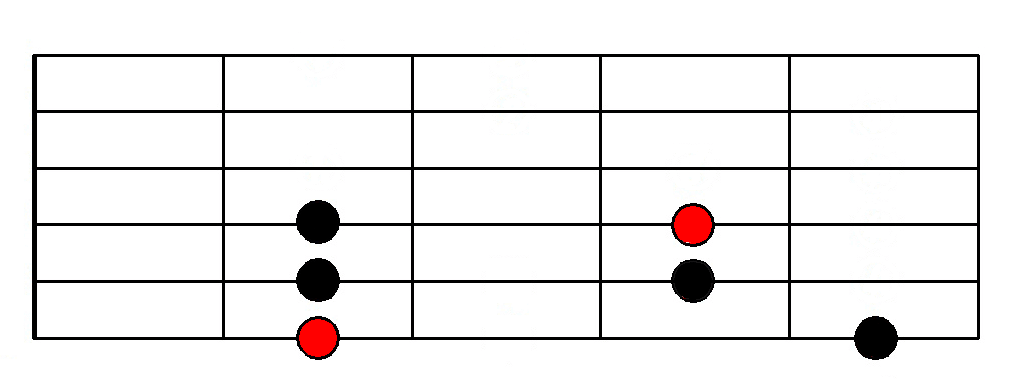
Blues Scale
The blues scale differs from minor pentatonic scale by adding of the ♭5th step.
A blues scale:
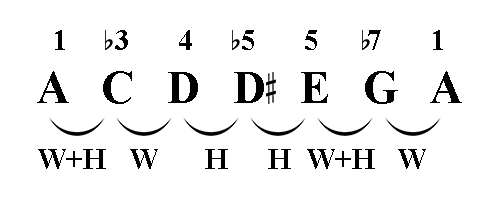
In this scale steps 2 and 6 are absent, 3, 5 and 7 steps are also lowered. In the scale there is a chromatic part, consisting of three notes. These are 4, ♭5 and 5 steps.

A blues scale fingering:

Chromatic scale
In the Chromatic scale, all notes have half step intervals, i.e. if you play all the notes in order, we get the chromatic scale.
So, we examined the basic scales and their constructions.


